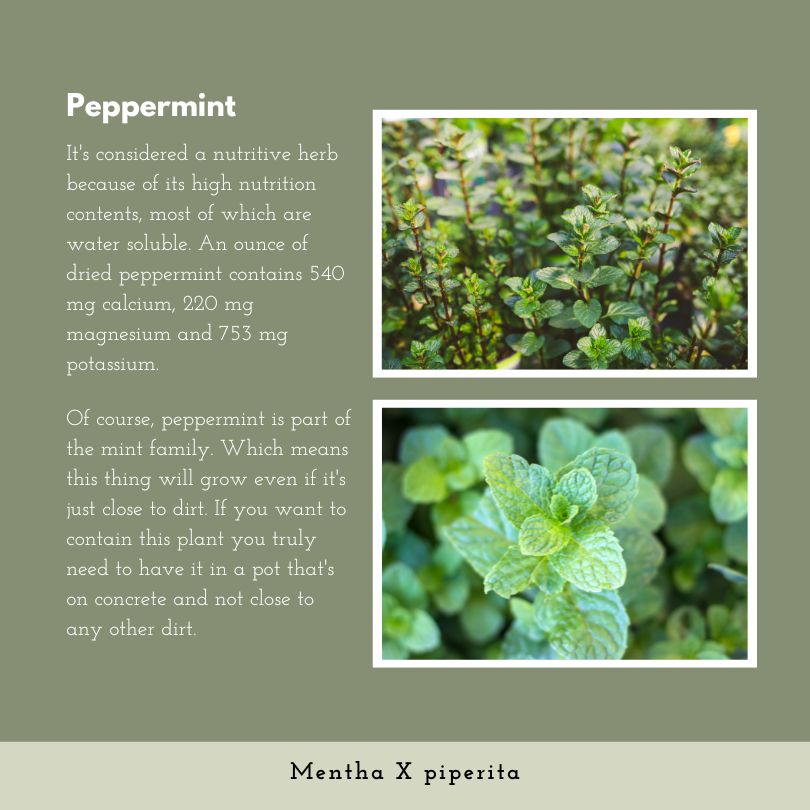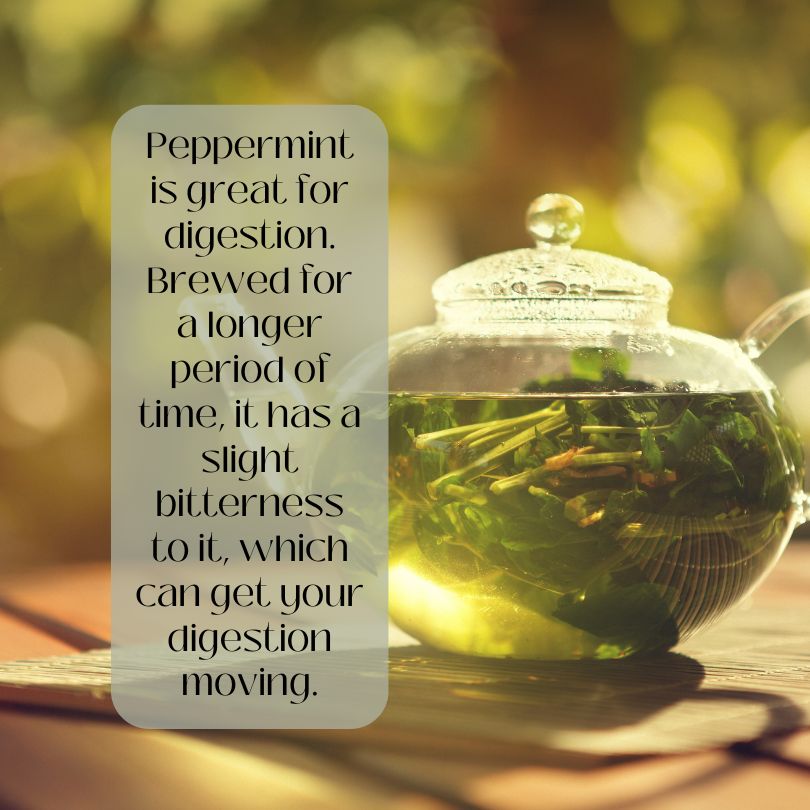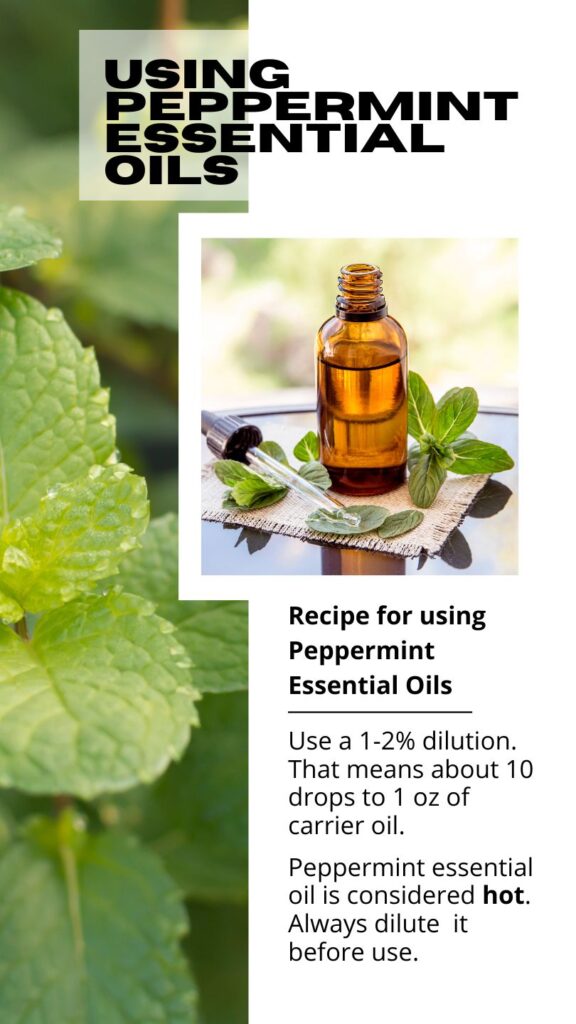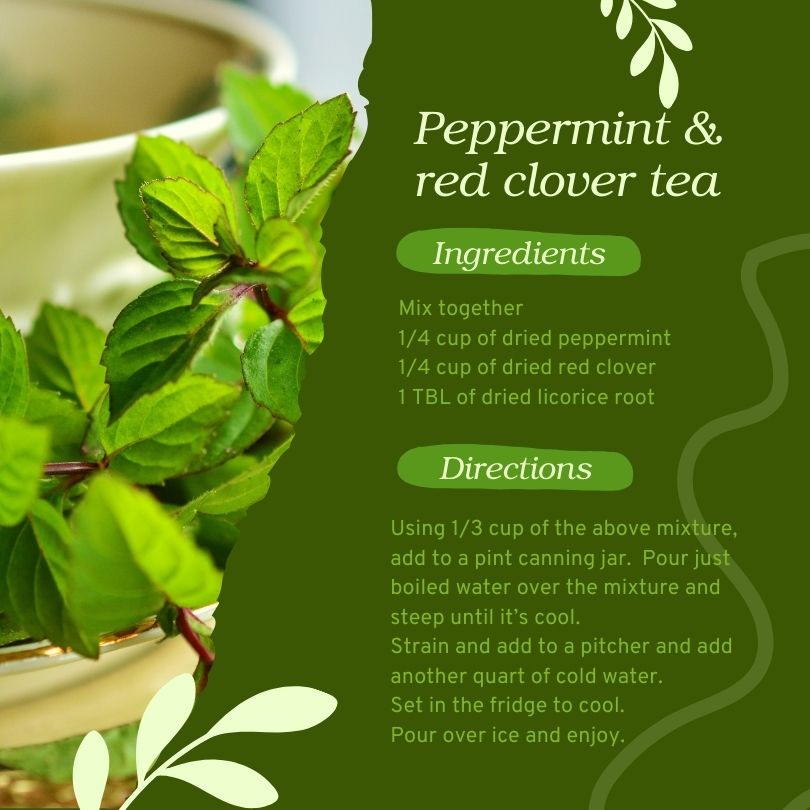Peppermint: Nature’s Little Miracle For Digestion, Headaches, And More!
Energetics:
Cooling & warming.
It’s more cooling when used externally on the skin or drank as a cold tea.
It’s more warming when it’s drunk as a hot tea.
Either way, it’s drying.
Peppermint (Mentha X piperita)
This wonderful tasting plant can be used for lots of reasons:
- Digestion
- Headache
- Muscle pain
- Cramps
- Hiccups
- Nausea
- Skin issues
The “X” in the name tells you it’s a hybrid. Peppermint is a cross between Spearmint (mentha spicata) and water mint (mentha aquatica).

A lovely trait of peppermint is that it’s almost impossible to kill. We had a large patch of peppermint under a kitchen window once. I thought it would be great because of the smell. You know all that lovely minty scent under the kitchen window. Perfect, right?
Well turned out, the window was on the south side of the house. We couldn’t open south windows because we lived on the north side of a dirt road. Can you say DUST!!!!!
And it turned out the dogs absolutely loved it. I suppose that wasn’t so bad. They rolled in it and smelled great, but the plant was perpetually smashed and wasn’t pretty to look at anymore.
It took years to get it all up. Peppermint spreads by it’s roots and if they get a hint of dirt, they’ll grow.
This plant is definitely an overachiever.
Digestion

Use it to relieve gas and bloating after a large meal, by just sipping an after meal tea, cold or hot. It’s antispasmodic properties will help relieve the cramping that can come with these issues and calm everything right down for you.
There’s been studies done that show it can actually help with more severe digestive issues like IBS and ulcerative colitis. Essential oils were used for these studies, in special capsules that were made to get through the digestive juices of the stomach. This is so it could make it to the intestines before it dissolved to do its work.
Headache
Peppermint is great for tension headaches.
It’s considered a nervine. It can be relaxing or stimulating to the nervous system. That sounds like they counter each other, but they really don’t.
What this really means is it can create an alertness, wake you up, but without the nervousness. It relaxes you which can calm anxiety which can be causing tension and headaches.
It’s a great alternative to coffee for waking up in the morning or as an afternoon pick me up.
Peppermint’s relaxing qualities
This has a wonderful relaxing nature. This and it’s antispasmodic properties can work for you in a number of different ways!
Muscle Pain
Use peppermint in your bath or as an infused oil to relieve muscle pain. It’s antispasmodic action along with it’s pain killing properties can both help with this as well.
Cramps
The antispasmodic nature of peppermint works great to relieve cramps. Use a very strong infusion, a bath or a poultice for this.
Be sure you have the time to sit back and relax to allow the herb to work.
Hiccups
I learned this from an amazing herbalist from New York, 7Song. He’s run the Free Ithica Clinic for more than 20 years.
This would be due to it’s antispasmodic properties. I haven’t tried it yet, but will next time my husband get the hiccups.
Nausea
Peppermint is great for post-op nausea. In many cases you’re taking a pain med after an operation. Sipping on a cup of peppermint tea can be a calming way to help settle your stomach without messing with the pain meds you might be taking. And warm you up in the cold hospital room.
It’s also a nice and gentle way to relieve a nervous stomach and diarrhea.
Skin Issues
Peppermint contains a lot of volatile oils. That’s why it smells so good. These oils are highly antimicrobial. That antimicrobial trait includes antibacterial properties you can use to your advantage for cleaning wounds and calming the itchiness of rashes.
Other uses for Peppermint
Those antimicrobial properties can help protect against Influenza A, herpes simplex (cold sores) and can make a really great household cleaner.
Using Peppermint
There’s lots of ways you can use peppermint. If you’re using the plant you can, of course make a tea, an infusion, a simple syrup, a spray or a bath.
Using a tent over steam is a great way to clear congested sinuses and the antibacterial properties can be great for your skin this way as well. Be careful with your eyes and nostrils over just boiled water and peppermint. Give yourself some space between your face and the bowl.
Used hot, peppermint is a warming herb and can be good for helping you move a fever along. Sipping the warm tea can get you to the “sweat”, and to the other side of a fever.
Used cold, it’s a cooling herb and can do wonders for cooling you off on a hot summer day.
Food
Peppermint can be added to all kinds of green salads, used as a garnish, made into a pesto or added to a smoothie. The nutrition in it can be a great addition to any meal.
You can create a simple syrup and add it to all kinds of cool summer drinks. Add it to things like other herbal teas, sparkling water, lemonades or any number of adult beverages where a slightly sweet minty flavor might strike your fancy.

This sweet syrup is a tasty addition drizzled over fruit too, a simple pound cake or ice cream.
Making tea
I like to use peppermint to add flavor to other herbs, especially during the summer months.
Last year in early spring as we were doing more than usual once the warm weather started, I was using it regularly for pain relief to ease sore muscles.

I made a tea using peppermint and red clover, adding the clover just because it tastes good. Then added just a touch of licorice root for the sweetness.
It relieved my sore back and sore everything else pretty good. I wouldn’t say I was pain-free. But I was close enough, I wasn’t thinking about how badly I hurt anymore. I didn’t even realize for a while that I wasn’t hurting any more. It was subtle.
I have several remedies for pain. My hot pepper pain relieving oil. I use willow bark tincture. And depending on the reason for the pain, I might use St. John’s Wort or comfrey oil for pain from inflammation.
But during the summer months when it’s 100 deg here in Kansas, I prefer to drink a nice cold tasty glass of tea that can do double duty. Keep me cool and help reduce the pain all at the same time.
If you have aches and pains from the extra outside work you find yourself doing during the spring & summer months, give peppermint a try.
Do you like peppermint? Have you used peppermint either dried or fresh? What’s your favorite use? I really love to hear what your favorite peppermint drink is or your favorite way to use it in food is in the comments below! What’s your favorite recipe?



Pingback: Hibiscus a powerhouse with hidden benefits.